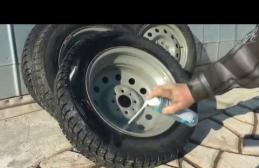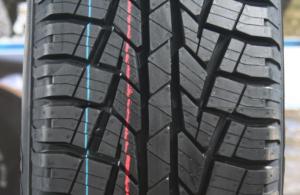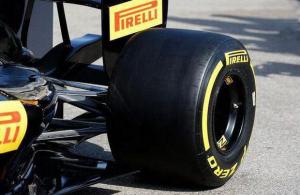Tire conditioner is a special agent designed to treat the outer surface of a tire before sending it for conservation. Its purpose is to maintain the elasticity of the surface, prevent aging and cracking of the rubber, and protect it from harmful factors such as ultraviolet light and high humidity.
Many motorists know that when it is necessary to adhere to certain rules, but not everyone is informed about the availability of special chemicals for the preservation of tires. Such products are called differently - a tire preservative, a tire conditioner, a tire tread agent, and so on. Currently, they are gaining more and more popularity due to the fact that they can significantly increase the life of car tires, and therefore save money. Various tire preservatives are available on store shelves, but selection should be made based on additional information. Further in the material, a non-commercial rating of popular preservatives is presented, which are used by both domestic motorists and their foreign colleagues.
| Name of funds | Brief description and features of use | Package volume, ml / mg | Price as of winter 2018/2019, rubles |
|---|---|---|---|
| Hi-Gear Tire Cleaner | Complex product that is a conditioner, cleaner and preservative for tires. Perfectly protects the rubber surface of car tires. It can be used both for regular processing of tires and for processing their surfaces before placing them for long-term storage in the off-season. It contains an element called FadeStop, the task of which is to reliably protect rubber from the harmful effects of ultraviolet radiation. | 454 | 500 |
| The product can be used on rubber and plastic surfaces. For example, it can be used to process a "torpedo" to protect it from ultraviolet radiation. Perfectly protects tire rubber from harmful factors during off-season storage. There are many positive reviews about this preservative on the Internet. | 320 ml; 500 ml | 350 rubles; 380 rubles. | |
| The tool is a versatile tool that can be used to treat rubber elements (for example, car door seals, rubber wipers and other rubber parts), outer plastic and vinyl parts. It is realized in the form of a liquid, so it must be applied with a rag or brush. In this case, you need to process tires two times - clockwise and counterclockwise. | 1 liter | 800 | |
| This tool is more likely to be used by auto repair shops and tire dealers. It is sold as a concentrate in a liquid state. After processing, the tire must be wrapped in cellophane film before storage. The preservative is applied using a spray bottle or paint brush. The treated tire can be stored for up to 5 years! | 1 liter; 5 liters. | 200 rubles; 800 rubles. |
Why and how to use tire preservatives
Any rubber dries and cracks over time, even if it just lies in storage. This is especially true for car tires, since the safety of driving a car critically depends on their condition. In addition, every car enthusiast wants to extend the life of a car tire, since rubber is not cheap. Therefore, the use of a preservative for storing tires also has a positive economic effect.
As a rule, tire treatment products are carried out on the basis of silicone oils... These compounds have a beneficial effect on rubber, not only creating a protective layer on their surface, but also softening it, that is, preventing its tanning. This is especially true when it comes to a rather old and / or worn-out tire. The use of a tire retreading agent will increase its resource. It is possible to process both winter and summer tires, including studded ones, with different tread depth and shape, as well as tires of any diameter. Tire preservative silicone works equally well on any rubber.
Please note that unlike which cannot be applied to the tread, the tire preservative composition must be applied to the entire outer surface of the tire, including the part in direct contact with the road surface.

How to store tires correctly
The use of a tire preservative makes sense especially when stored in unfavorable conditions. Thus, it is recommended to store automobile rubber in a well-ventilated area, where the relative humidity is within normal limits, about 50%… 60%. As for the temperature, it should be around + 10 ° ... + 25 ° С. Excessive temperatures outside this range can adversely affect the condition of the tire after removing it from storage. Therefore, if the rubber is stored under conditions corresponding to a slight deviation from those indicated, then it makes even more sense to treat it with a preservative before placing it for long-term storage.
Interestingly, tire preservatives are all the more interesting for tire workers and owners of car dealerships that sell car tires. So, these funds can be used to treat tires that were not sold in the season. This will give their surface a marketable appearance even after long-term storage in a warehouse in the off-season. However, in this case, it is better to buy concentrated funds to save finances.
As for the method of using tire preservatives, it is, as a rule, one, and consists in the fact that the agent is applied to the outer surface of the tire from an aerosol can in which it is sold. An aerosol can not only provides the convenience of using the preservative, but also allows it to be applied to the surface to be treated more evenly and efficiently. Please note that the tires must be cleaned of dirt before processing with water and a brush (the easiest way is to wash them under the pressure of water from a "Karcher" or similar apparatus), and apply the preservative on a dry surface. In this case, it is advisable to wash the mowing discs as well. Applying the product to a dirty and / or wet tire will reduce performance to zero.
Also, before washing (if the tire is not very dirty), it is advisable to process the surface of the tire. alkaline(!!!) with a solvent and a brush. In this case, as a result of a chemical reaction provoked by the solvent, foam will form. The washing process must be repeated until the foam stops staining. After that, the solvent must be thoroughly washed off with copious amounts of water, and the tire must be allowed to dry.
Rating of popular tire preservatives
Before buying a tire preservative, it makes sense to familiarize yourself with real tests and reviews of car owners who have used one or another preservative at different times. Our editors have compiled a non-commercial rating (that is, one that does not advertise any of the products below) of popular preservatives, based precisely on the analysis of the use of the most popular of them. We hope that it will help you make the right choice and buy a tire preservative that is optimal for use with your car's rubber.

Hi-Gear Tire Cleaner
Hi-Gear is a comprehensive product that is a conditioner, cleaner and preservative for tires. It is one of the most popular in its market segment, as it shows high efficiency, and not only protects the rubber surface, but also helps to clean it. Therefore, before placing the rubber for seasonal storage with the help of the “Hi-Gear” tire preservative, you can effectively get rid of dirt on the tire, at the same time applying a protective layer to it. It is noted that the composition of the said preservative includes a licensed compound called FadeStop, which is a blocker of ultraviolet radiation on the surface of the tire, that is, protection from bright sunlight.
It is noted that the Hi-Gear tire cleaner and preservative is recommended for use not only by ordinary motorists, but also by employees of detailing stations, car wash technicians and other people who repair and / or clean cars on a professional basis. Confirmation of this fact is that in the United States, this tool is very popular among employees of detailing stations (comprehensive car cleaning).
Real tests carried out by enthusiasts have shown a fairly high efficiency of this tool. It perfectly removes dirt, and the preservative included in its composition reliably protects the surface of the tire during its seasonal storage, even in adverse conditions. Therefore, the Hi-Gear tire preservative is definitely recommended for purchase to all motorists.
A conditioner-cleaner is realized in a 454 ml aerosol can. The article number for such a package is HG5333. Its price as of the winter of 2018/2019 is about 500 rubles.

Conditioner spray for the care of rubber and plastic products Verylube
The conditioner in the form of a Verylube spray can be used to treat not only rubber, but also plastic surfaces. In particular, to protect their harmful effects of ultraviolet radiation. For example, in a car, it can be used to process the front panel (the so-called "torpedo"). The product is designed to restore the original color of the product, prevents the appearance of microcracks, color fading, restores the original shine of the product. It is noted that it is necessary to apply the conditioner "Verilyub" on a previously washed and cleaned surface (this product is not intended for cleaning). The method of using the conditioner spray is traditional. Before applying, it is necessary to shake the balloon well, then apply it with a thin layer on the surface to be treated. Further, the excess must be removed with a napkin or rag. The resulting processed surface does not require additional mechanical polishing, that is, it is completely ready for use.
Numerous reviews on the Internet suggest that Verylube air conditioner is a very effective tool, and many domestic motorists use it. Moreover, it is noted that it is used not only for processing tires, but also for other elements of the car body. Thus, the tool will be a good addition to the collection of auto chemical goods for any car enthusiast.
It is realized in aerosol cans of two different volumes. The first is 320 ml, the second is 500 ml. Their part numbers, respectively, are XB40006 and XB40106. And, accordingly, the prices for the above period are 350 rubles and 380 rubles.

Preservative agent for the care of plastic and rubber Koch Chemie Gummi- KunstStoff
Koch Chemie Gummi-KunstStoff, a preservative for plastic and rubber care, is a versatile product that can be used to treat rubber elements (for example, car door seals, wiper blades and other rubber parts), exterior plastics and vinyl parts. It perfectly cleans old dirt and stains left by oil, fuel, non-aggressive chemicals. Together it acts as a preservative. Excellent for processing matte surfaces, it also copes very effectively with the tasks of preserving tires for their further transfer to long-term off-season storage.
It is recommended to remove very stubborn dirt before use so as not to waste the product. It is sold in liquid form. The use of a preservative involves applying it to an applicator sponge, with which the agent is applied to the surface to be treated. As for the processing of tires, the instructions explicitly state that they need to be processed in two passes, the first clockwise, and the second counterclockwise. This is done in order to raise the pile of rubber and perform a deep cleaning of the surface of the tire, as well as the penetration of the preservative elements that make up the product into its material. The instructions also indicate that the product is very economical, and it takes no more than 10 ml to process one car.
Real life tests have shown that Koh preservative does a good job of treating the rubber surfaces of car tires. Accordingly, it is unambiguously recommended for purchase, like other products of the mentioned brand. Differs in a good ratio of price and volume of packaging. So, the product is sold in 1 liter bottles. The average price of such a package is about 800 rubles.

Toal-Mix Concentrated Tire Preservative
Toal-Mix tire preservative concentrate is more suitable for tire sellers and tire shop owners. This tool can be used to treat any car tires before storing them for long-term storage. This is also true when, after seasonal sales, unsold tires remain in stock. Toal-Mix tire concentrate is diluted with water in the temperature range from + 35 ° С to + 50 ° С. And it is applied with a spray gun or with a regular brush. After processing, the tire must be wrapped in a transparent stretch tape. In this form, it can be stored for up to five years! The tire will look like new after unpacking. Preservative Toal-Mix, if necessary, can be easily washed off with water and a cloth (brush).
The treated tire does not shrink during storage and does not lose its elasticity. Apply the product to the entire outer surface of the tire, including the tread. The preservative seals the pores of the tires well. Descriptions found on the Internet claim that Toal Mix tire preservative is excellent as a professional product for treating automotive rubber prior to long-term storage. Therefore, the tool is recommended for purchase, especially for people involved in the sale and repair of car tires on an ongoing basis. Differs in a very favorable ratio of the size of the package and the price.
So, the Toal-Mix preservative is sold in canisters of two volumes - 1 liter and 5 liters. Their average prices for the above period are about 200 rubles and 800 rubles, respectively.
This list is far from complete, since at present the auto chemistry market is actively replenishing with new tire preservatives, since their more and more active use is observed both by private motorists and various auto companies. Therefore, if you had experience using certain tire preservatives (included in the above list or not), write about it in the comments. Thus, you will help other car enthusiasts to make their choice faster and easier.
What else can you handle the tire
If for some reason you do not want or cannot buy a tire preservative made specifically for these purposes, then you can use similar products that have a similar effect. As mentioned above, most tire preservatives are based on silicone oils. Accordingly, the processing of the tires before storage can be normal. This versatile tool is used to treat a wide variety of surfaces and things, including car tires.

An example of packaging silicone grease in an aerosol can
Like factory-made tire preservatives, in most cases silicone grease is sold in aerosol packaging. However, in rare cases, you can find this product on sale in liquid form. In this case, you can do it in two ways. The first is to thoroughly cover the entire outer surface of the tire with the mentioned grease using a rag or napkin. Naturally, this is a rather laborious and time-consuming exercise. Therefore, the second option is to put some silicone grease in a hand spray bottle and use it to apply the grease to the rubber surface like an aerosol can. Note, however, that not all lubricants can be placed in a spray bottle. If it is very dense and / or sticky, then it can simply clog the membrane of the atomizer. Therefore, the best way out in this situation would be to buy silicone grease in a can, especially since it is not a problem at the present time, and the range of products on sale is quite wide, and the price of such a grease is low.
Some motorists are confused by the fact that there is a small amount of solvent in the silicone grease in the cans. It is necessary so that you can spray the lubricant from the cylinder without any problems, and also apply it evenly. In fact, after application, the solvent evaporates from the surface within a maximum of half an hour (usually even faster), so it does not do any harm to car rubber.
In some cases, instead of a silicone lubricant for processing, you can use tire blackener... Just before applying, you must carefully read the instructions, as a rule, it must be applied to thoroughly washed and dry rubber. And still not for processing the contact surface, since then the grip characteristics of the tires will deteriorate. As for specific brands, at present the range of these products is very wide, and it makes no sense to recommend any of them. In any auto shop you will find a wide selection of tire blackeners.
Also, for surface treatment of car tires, you can use natural liquid silicone... It is used in the home and industry to lubricate rubber, rubber seals, treadmills, molds, blackening wheels and bumpers. Physically, it is a thick, transparent, colorless (less often with the addition of a dye) liquid slightly heavier than water (density about 1.1 ... 1.2 kilograms per cubic meter). It can be found on sale in cans (for example, five-liter) in various auto, home or hardware stores. Apply liquid silicone to a clean, dry surface with a brush (paintbrush) or rags.
Conclusion
Processing car tires before storing them with special preservatives is a very useful procedure that will not only save rubber from premature aging and cracking, but also significantly extend its service life. Therefore, the use of the above-mentioned preservatives is recommended for all motorists who value not only safe driving, but also save on maintenance of car elements. As for the choice of this or that tool, it must be performed not only on the basis of the ratio of price, quality and efficiency of use, but also on the logistic component. So, in different regions of the country, different preservatives may be on sale.
How to store Featured tires correctly. How to treat winter tires before storage
How to store car tires with or without disks
New tires in stockEvery motorist sooner or later faces the problem of storing tires. The climate in our country does not allow moving around on one type of rubber all year round, so you have to have a winter and summer set. Throwing out tires after one season is not an option. Simply folding a set of tires on the balcony is also not an option, since they are made of rubber and special additives that require special storage conditions.
The room where the wheel tires are stored must be closed and warm. Storage temperature from 10 to 20 degrees Celsius. Also, humidity affects the service life, it should be no more than 60%. Moreover, the tires are also afraid of the sun's rays, because of them microcracks are formed.
It is very important in what position they will wait for their season. As soon as you change tires from summer to winter or vice versa, mark where the tires were. Usually they write the letters "PP" - it means front right or "ZP" - it means back right. Upon arrival of the right one, if the wear is significantly different, it is recommended to put better rubber on the front wheels.
An interesting video, be sure to watch:
Winter tire storage
It is highly discouraged to store them on the balcony or in the closet, since in these places it is impossible to isolate them from certain external influences. It is best for them to wait for their season in a garage, dry basement. Storage temperature and humidity are the same as for summer tires. If the tires are with rims, then store them horizontally, otherwise a vertical one will do.
Summer tire storage
The ideal option is to store summer tires with rims. If you can't afford it, then you don't need to use discs. They will be perfectly preserved if you follow some rules. The room where the tires are stored should be free from drafts and sunlight. The air temperature is from 0 to 25 degrees Celsius, otherwise the rubber will deteriorate faster. Do not store oil, gasoline, thinner, diesel fuel and other liquids near tires.
Storing tires without rims
 Tires should be stored upright, tightly to each other. To prevent them from losing their factory shape, you need to turn them over once a month. It is not necessary to cover them with cellophane, as because of this condensation forms on them, which is contraindicated for tires during storage.
Tires should be stored upright, tightly to each other. To prevent them from losing their factory shape, you need to turn them over once a month. It is not necessary to cover them with cellophane, as because of this condensation forms on them, which is contraindicated for tires during storage.
Storing tires on disks
 Tires on disks are much better preserved than without them. They should be prepared for storage in the same way. It happens that people are advised to deflate tires before storing, but this is not true, because this way dust and moisture will get inside them, which contribute to deformation. Store them horizontally, and to save space, you can fold one wheel on top of the other. If stored vertically, they will deform. The best option is to hang the rims with tires on a hook, so they will be preserved the best, but not everyone has this opportunity.
Tires on disks are much better preserved than without them. They should be prepared for storage in the same way. It happens that people are advised to deflate tires before storing, but this is not true, because this way dust and moisture will get inside them, which contribute to deformation. Store them horizontally, and to save space, you can fold one wheel on top of the other. If stored vertically, they will deform. The best option is to hang the rims with tires on a hook, so they will be preserved the best, but not everyone has this opportunity.
Tire treatment products
After removing the tires from the rims, you should clean them from dirt, stones and other debris between the tread walls, also thoroughly rinse the entire surface from the inside. To avoid tire aging, it is advisable to treat it with a special agent sold in any car dealership. You need to buy just such a protector, which is suitable for the type of your tires, otherwise you will, on the contrary, worsen their condition.
The agent should protect rubber from UV radiation and provide preservation. Apply the product only to thoroughly washed, clean, dried rubber.
pro-zamenu.ru
Seasonal Tire Storage - How To Store Your Rubber Correctly!
When changing seasonal tires, every car enthusiast faces the question: how to save it until the next season. After all, tires are stored for about six months. According to the data that is replete with the Internet, if not properly stored by the onset of the season, you can get deformed and completely damaged rubber.
Proper storage requires adherence to certain humidity and temperature conditions. It is also necessary to store the wheels in a suspended state on round brackets and turn them regularly.
It should be admitted that this method is quite burdensome. There are, of course, a certain number of motorists who are ready to follow such recommendations and engage in such procedures on a daily basis. But, it is not always possible to find time for this. And not everyone has a place to hang the wheels.

So what is the way out of this situation? How to store tires during the off-season?
Rubber for tires is a composite material, which means that in addition to rubber and polymers, it contains various additional components. Such as carbon black, stabilizing and reinforcing materials (metal and textile cord).
Being exposed to the influence of various factors during operation, rubber ages over time and gradually loses its quality. Direct sunlight, temperature changes and moisture all accelerate its aging and wear. Tires that have lost their elasticity are practically unsuitable for use in winter.
The easiest way to store tires off-season is to pack the rubber in special covers.
For example, the Heyner tire storage covers make storing your car wheels convenient and comfortable. If you have to store wheels in a residential area, then these covers will save you from the unpleasant and harmful smell of rubber:
- before packing in covers, tires must be thoroughly washed and dried;
- after drying, it is advisable to treat them with a special preservative, which can be purchased at a specialized store;
- if possible, store each wheel in a separate bag.
Heyner tire storage covers perfectly protect rubber from sunlight and moisture. Sufficiently durable materials are used for their manufacture. Convenient fasteners will help you to easily pack the wheels, and if necessary, remove them from the covers. Special handles will help you carry the wheels to any convenient place.

Proper storage of tires is the key to their durability
Most car enthusiasts are pretty careless about storing tires. Changing summer tires to winter ones, they simply put it in the far corner of the garage or take it out onto the balcony, where it lies then all winter. And what is their surprise when in the spring they see that completely new and practically unworn tires have fallen into disrepair. In reality, storing car tires involves fairly simple rules. What are they all about?
When replacing tires, first of all, it is necessary to mark on which disc the particular tire was mounted. Never store them in a damp, cold room. The storage temperature should be between ten and twenty-five degrees. Naturally, it is necessary to avoid exposure to sunlight during storage. The balcony is the least suitable for this. And the conditions in the garage are far from ideal, as there is sometimes a high level of humidity in it.
But if there is nowhere else to store tires besides the garage, then for this it is necessary to prepare a special place there. To do this, each tire must be packed in a cardboard box, in which holes must be made so that moisture does not accumulate inside.

If the tires are not removed from the disks for storage, then the most acceptable way to save them until the next season is to lay them horizontally, beforehand, having covered them with a layer of chalk and reducing the pressure to one and a half atmospheres. It is also necessary to ensure that no oil products (gasoline, oil and other fuels and lubricants) get on the tires during storage. One option is to store the tires on rims by hanging them in the garage.
When storing without discs, the tires can be parked vertically, but remember to turn them from time to time to change the point of contact of the tires with the floor, which will help prevent deformation of the side surfaces.
The best option is to hand over the tires to a service station, where storage of car tires is one of the services for our regular customers.
In conclusion, I would like to add that even with occasional use of the car, tires have a certain service life and no matter how many kilometers have been traveled. The longest tire life is no more than five years. And do not forget that good-quality tires on a car are one of the conditions for your safety on the road.
ok-sovety.ru
How to store tires correctly
In order for automobile rubber to last more than one season, it is necessary not only to properly care for it, but also to adhere to the basic rules for storage. Not many people consider it necessary to follow these rules, so they buy new tires every six months. If you do not want to spend extra time and money on buying new tires, then you need to familiarize yourself with the requirements that relate to their storage.
Online store of tires and wheels Rezina.CC offers a wide range of products at affordable prices. All products are of high quality and durability. For more information on tire products, please visit https://rezina.cc/shiny. Here are detailed descriptions, photos and customer reviews.
What you need to do with proper storage of rubber
- Choosing a room. Everyone knows that ultraviolet light has a harmful effect on car tires. Therefore, they need to be stored in a closed and dark room, where the sun's rays will not fall. Do not forget about the air temperature, which should be in the range from + 1000C to + 2500C.
It is worth remembering about airing the room. The air humidity should be approximately 50-60%. Most drivers keep their tires in the basement. As a rule, it is there that the air humidity exceeds the permissible norm. But if it is not possible to store tires in another place, then the basement needs to be ventilated very often.
- We put marks on the surface of the tires. If you need to install tires on the same wheels, mark them on their surface before removing. It is also necessary to note the direction of the tires.
- We process rubber before storage. After removing the tires from the wheels, you need to wash them thoroughly, clean all the stones, carefully inspect the inside for small objects. After that, you need to thoroughly dry the tires. Then we process the surface of the tires with special means. They will help protect your products from premature aging. Before using the product, you must read the instructions for its correct use. Since in the opposite case, you can harm the rubber, and accelerate its wear.
- We choose the position of the tires. One of the most important storage rules is the correct position of the tires. If they will be stored on disks, it is best to stack them on top of each other in order to save space. You can also store rubber on disks in a suspended state. But in an upright position, you should not save tires.
As for tires without rims, in this case it is not recommended to suspend or lay them horizontally. This rule cannot be ignored, because otherwise the grip characteristics of the tread may deteriorate. Plus the additives can speed up tire wear. To protect the rubber from deformation, it is recommended to use a semicircular base for storage. Do not forget that the tires must be flipped periodically.
- We do not pack tires in bags and boxes. This storage method will negatively affect the condition of the tires, as condensation may form inside the bag or box, which is very harmful to the tires.
rualavto.ru
Winter rubber storage | Diaginfo
Every season we change the summer type of rubber to winter and vice versa. For example, I've never thought about whether there are any peculiarities in the storage of winter tires, and indeed automobile rubber in general. It turns out that there are a number of some points worth writing about. After all, you must admit it will be offensive after half a year to see cracked or deformed rubber in front of you (this is certainly an exaggeration, but nevertheless).
What is rubber afraid of, consider the points:
- Direct sunlight - microcracks are formed, rubber itself collapses, ages quickly.
- High temperatures (above +25 degrees), sudden temperature changes.
- High humidity, condensation, dust and dirt.
It is forbidden to store rubber outdoors !!!
In total, a clean, dry, dark room of average humidity without sudden temperature changes suits us. Now let's move on to the process of preparing rubber for storage.
We remove the rubber, clean it of dirt, sand and other things, pull the stones out of the tread. If the protector is directed, we remember or note which wheel stood where. It is better to treat rubber with a special chemical agent to preserve it for the season, it stops the aging process of rubber. It is not advisable to seal or seal the rubber with anything.
How and in what position to store tires.
It is better to store the rubber assembled with a disc, the pressure in the wheel should be slightly reduced. Thus, the inner surface does not become dusty, the wheels keep their shape.
Tires with discs assembled - stored either in a stack (no more than 4 pcs in a stack) on a flat surface, as shown in the figure, or in a suspended state, the wheel is suspended by the disc itself.
Tires without discs are stored strictly in an upright position, periodically they must be turned a quarter of a turn so that they do not lose their round shape.
Cameras are kept in a slightly inflated state on a bracket sticking out of the wall.
We are also preparing the battery for winter - choosing a charger.
diaginfo.ru
Car tire storage
In this article, we will take a closer look at the issue of seasonal storage of tires - tires and wheels with rubber assemblies. At first glance, it seems that it does not matter how to store rubber. In what position and in what conditions, yes, of course, rubber is a rather plastic and resistant material, but still its operational properties may well change for the worse, if you do not follow the elementary storage rules.
This method primarily applies to those motorists who drive all year round on the same disks. That is, every off-season, what they say "change shoes", in this case, the tires are stored separately from the disks. Due to the low curb weight, tires can be stored in a pile, but not desirable. It is best to put the tires on the tread, and during the storage period, rotate the tires to change the bearing surfaces and prevent changes in the shape of the tire rubber. In this case, the load on the rubber will be minimal, both in terms of force and in terms of the time of its application.

When storing tires and disks in assembly, the mass of the assembly, relative to only one tire without disks, increases significantly. That entails a change in the way of storing tires complete with disks. To reduce loads, on a specific area of the tread, tire rim, disks with rubber, it is necessary to store the wheel on the wheel - in a pile.

In this case, the main load will fall on the disc, in extreme cases it will be evenly distributed over the rim, which also will not entail a change in the shape of the tire during storage. In addition to the location of tires during storage, climatic storage conditions are also an important factor.
General requirements for the storage room for tires
The material of tires (rubber) is influenced by the following factors that must be considered and observed in order to ensure the proper safety of tires during storage:
Temperature
Optimum temperatures for storing rubber products, including tires, are from 0 to + 25C. At temperatures above +25 ºC and below 0, rubber ages faster, this is manifested in the appearance of cracks, a decrease in the ductility of the tire material.
Humidity
It is necessary to exclude the appearance of condensation, water falling into closed cavities can be stored in them for a very long time, which entails a color change, and also affects the aging process of rubber. The relative humidity of the air during storage should be about 50 - 60%, i.e. as in a living space. The humidity in the basement is usually higher, so it should be periodically ventilated. Light
The best condition is to store the tires in a dark place. The most damaging effect is exerted by ultraviolet light, that is, first of all, it is necessary to close the tires from direct sunlight. You can additionally protect them with covers, which will protect the tires from ultraviolet radiation.
Technical fluids
Tires must be protected from all solvents, oils and greases, including short term exposure. Tires must also be protected from heat sources and welding spatter. It is best to wash and dry your tires before storing them.
Weight distribution on tires during storage
See the sections above for each specific method. In addition: when working with displacement, tire beading, tires must not fall from a height of more than 1.2 meters. Such loads can damage the tire sealing beads. With prolonged static loads, changes in the shape of the tire are also possible

It is also worth mentioning small stones that can get into the tread of the tire during its operation. Before storage season, take a screwdriver and use it to remove all stones from the tire tread. Small stones can cut through the tire over time, resulting in repairs or even damage to the tire.
Additional tire care products before storage
To protect rubber from aging, special products are available on the market. The so-called automotive cosmetics - "Cleaner-conditioner" or "Cleaner-protector for tires". These preparations, according to the instructions, must be applied to the outer surface of the tires. Processing is carried out immediately before "bookmarking" for storage.
www.autosecret.net

 Container with prepared water for boiling rubber products
Container with prepared water for boiling rubber products 























